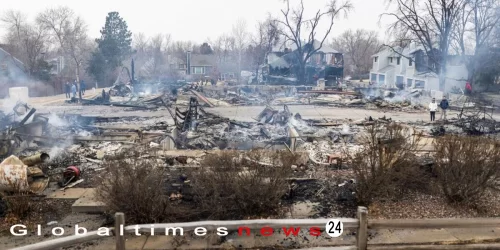Sar-Agha-Seyed is a remote Iranian village that is also known as the Roof village. This village has a unique architecture that connects the houses by using the roofs of the lower buildings as courtyards or roads for the upper ones. The houses are built around the mountains with stone, wood and mud that are carefully arranged to withstand harsh weather. Most of the houses have no windows and only one door, because this area is often covered with snow in winter. Sar Agha Seyed is located in the Zagros Mountain area at an altitude of about 2500 meters above sea level.
This village is very isolated, located about 130 km from the provinces of Chahar Mahal and Bakhtiari. It has very few facilities, such as schools, restaurants, or clinics. The only luxury that the villagers enjoy is electricity for lighting. There are no paved roads, so it is not suitable for modern life. When it snows, the village is completely cut off from the outside world. In 1984, when Ayatollah Khomeini led Iran, he visited this village and ordered the regional leaders to build roads. Since then, there have been no other changes in Sar Agha Seyed Village for more than 30 years.
To reach Sar Agha Seyed village, which is surrounded by walnut trees, orchards and springs, one has to take a winding dirt road that stretches for 40 to 50 km. Despite its remoteness, living there is a source of pride for the villagers. This is because Sar Agha Seyed is the holy shrine where Sayyid Isa is buried. Sayyid Isa, known as Agha-Seyed, is a descendant of the 7th Imam in Shia. Although it is not clear when this village was founded, Sayyid Isa’s genealogy shows that he was buried in this village around 600 years ago.
As an isolated village, it has amazing natural scenery. This village offers views of green wild gardens, very clear spring water and a refreshing mountain climate. The salt pool near the village is a very beautiful natural attraction, which also provides income for the villagers. Most of the villagers work as breeders and farmers, but they also harvest salt from the pool and sell it at the nearest market. Apart from animal husbandry and agriculture, weaving carpets is another source of livelihood for the villagers. Most of the population of Sar Agha Seyed are Bakhtiarian nomads who come to this village around May and leave when the extreme winter begins.
News ID : 2076
 Most Luxurious Prisons Around the World
World / Entertainment / Opinion
Most Luxurious Prisons Around the World
World / Entertainment / Opinion
 Justin Bieber's Justice World Tour postponed to next year due to his health concerns
Entertainment / Breaking News
Justin Bieber's Justice World Tour postponed to next year due to his health concerns
Entertainment / Breaking News
 Zoe Saldana wins the internet with her sustainable style at the Oscars 2023
Entertainment / Breaking News
Zoe Saldana wins the internet with her sustainable style at the Oscars 2023
Entertainment / Breaking News
 Entertainer Rolf Harris dead at 93
Entertainment / Breaking News
Entertainer Rolf Harris dead at 93
Entertainment / Breaking News
 Rapper Megan Thee Stallion opens up about Tory Lanez shooting incident
Entertainment
Rapper Megan Thee Stallion opens up about Tory Lanez shooting incident
Entertainment
 Nakba 75: Palestinian citizens of Israel are exiles in their own land
World / Opinion
Nakba 75: Palestinian citizens of Israel are exiles in their own land
World / Opinion
 Strange locations around the world!
Entertainment / Breaking News
Strange locations around the world!
Entertainment / Breaking News
 As Omicron surges, schools, businesses remain closed
Bussiness
As Omicron surges, schools, businesses remain closed
Bussiness
 Nearly 1,000 homes destroyed in Colorado Wildfire
World
Nearly 1,000 homes destroyed in Colorado Wildfire
World
 Major sports events of 2022
Sport / Breaking News
Major sports events of 2022
Sport / Breaking News